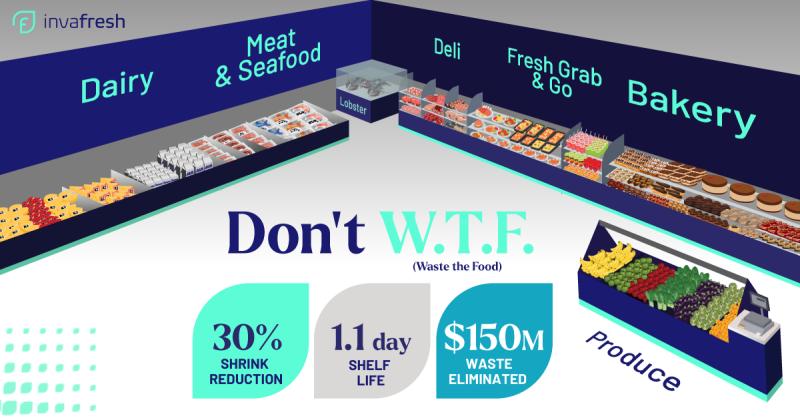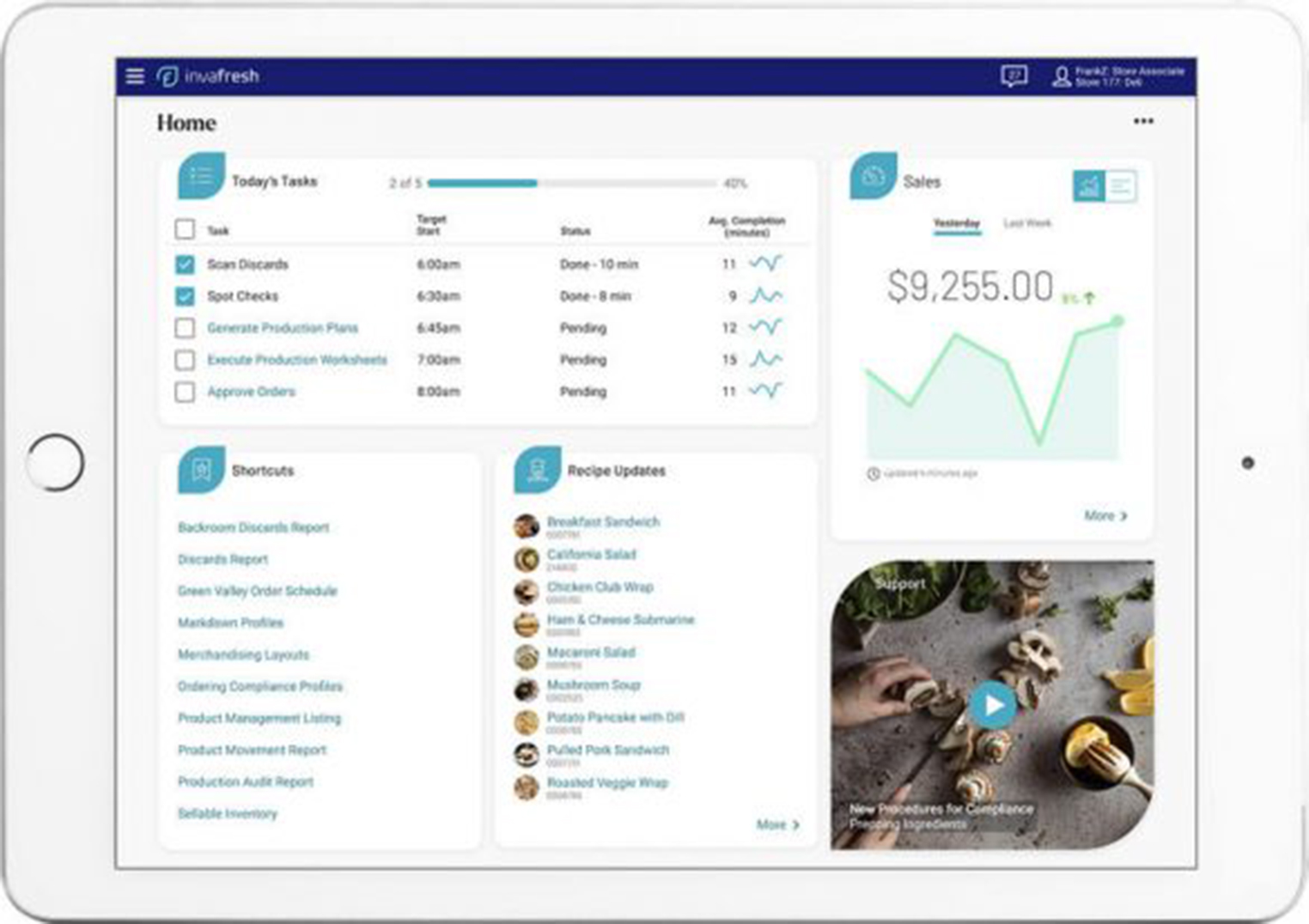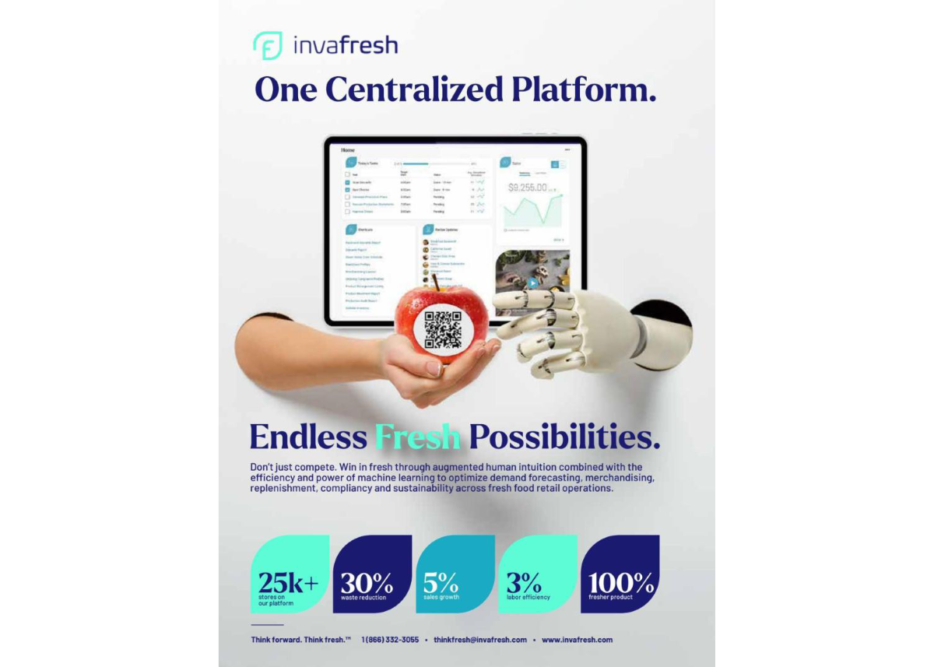The pandemic has highlighted tremendous opportunities for technology to solve continuing challenges impacting consumer behavior in fresh, said Muntazir Mehdi, senior product manager for analytics and AI for Toronto-based Invafresh, whose technologies are currently being used in more than 25,000 grocery stores in 15 countries.
Those challenges include inflation, labor shortages and supply chain issues.
“And it will continue to transform the way consumers shop as grocers look for innovative ways to provide greater convenience, transparency and variety in fresh purchases,” Mehdi said.
AI/machine learning has amazing capabilities to advance automation in fresh and accurately forecast demand, he added. Automated Fresh Ordering powered by AI and augmented human intelligence optimize inventory management, so shelves are always in-stock, not over-stocked, providing a variety of fresh foods accessible to all.
 Image courtesy of Invafresh
Image courtesy of Invafresh
From a consumer perspective, Mehdi said, stores that have adopted these and other fresh-centric technologies provide better experiences – fresher food, full shelves, greater variety, increased food safety and transparency.
Invafresh’s demand forecasting, which is driven by AI and machine learning, “drives exceptional consumer experiences by helping to extend the shelf life and providing retailers the right performance data to deliver the freshest food,” Mehdi said.
Consumers demand variety and assortment in their fresh food selections, he added, and Invafresh's Fresh Retail Platform ensures that the freshest array of products, including seasonal items, are always in stock and maximum shelf life is passed on to the end consumers.
“Managing product transformation can be complex. Invafresh makes it easy and efficient for stores to produce products across all fresh departments through recipes, creating regulatory compliant labels with accurate nutrition, allergen, and ingredient statements that keep consumers informed.”
Invafresh’s Fresh Retail Platform, he added, helps retailers gain visibility on in-store operations, which in turn helps in streamlining floor and backroom inventory across departments.
 Image courtesy of Invafresh
Image courtesy of Invafresh
The platform also plays a vital role in increasing efficiency with in-store production across departments by driving automation resulting in 3% improvement in labor efficiency, 5% increase in fresh sales and 30% reduction in food waste.
Fresh Ordering automatically generates just-in-time replenishment requirements for store backrooms for all fresh food retail grocery departments using in-store backroom perpetual inventory, merchandising requirements, transformation through recipes and, fresh food retail forecasts transformed into ordering units integrated with pre-existing retailer order fulfillment systems for significant labor- and cost-savings.
“Our fresh-native, fully modular platform is designed to process the living data of fresh and operationalize to forecast constant shifts in demand to optimize and match with supply and availability to reduce food waste and drive sustainable fresh operations,” Mehdi said. “Retailers gain one centralized platform to manage and improve visibility of all Fresh departments as well as performance at the store level.”
The platform is unique, he added, in its ability to handle all fresh use cases, ranging from meat, bakery, produce deli, and more — each with its own specific nuances and edge cases.
With increased access to technology and information, end consumers are becoming smarter, Mehdi said, and they expect variety, transparency, safety and consistency in their fresh purchases.
“Fresh has already become a key differentiating factor for retailers that helps them stand out in an extremely competitive market.”

